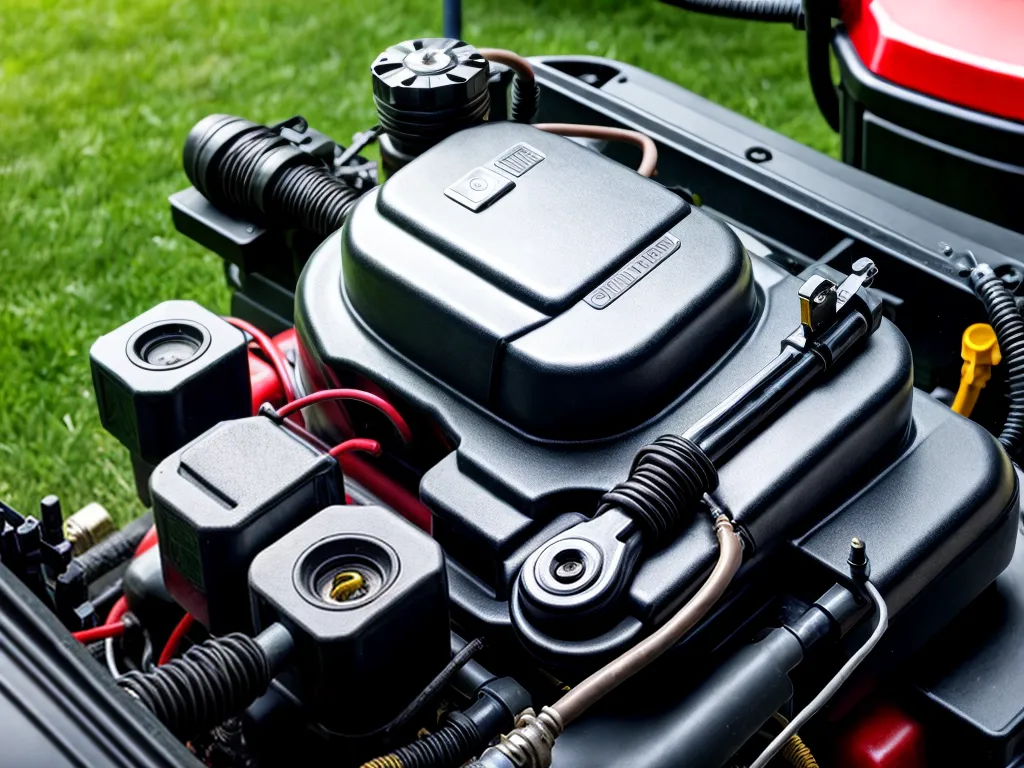
How to Rewire Your Lawnmower Ignition Coil
Having a properly functioning ignition coil is crucial for getting your lawnmower started and keeping it running smoothly. Over time, the ignition coil can wear out or get damaged, requiring a rewire job. Rewiring the ignition coil on your lawnmower may seem intimidating, but it's actually a fairly straightforward process that I can walk you through step-by-step.
Assessing the Ignition Coil
Before I get into the rewiring process, it's important to verify that the ignition coil is actually the problem. Here are some troubleshooting steps I take:
-
Check for spark - Remove the spark plug wire and hold it close to the metal engine block. Pull the starter cord and see if a strong, blue spark jumps from the wire to the block. No spark likely means an issue with the ignition coil.
-
Test coil resistance - Use a multimeter to test the resistance between the two pins on the coil. Consult your lawnmower manual for the proper ohm range. Out-of-range readings indicate a bad coil.
-
Inspect physically - Look for any cracked, damaged, or burned spots on the ignition coil, which can prevent it from operating properly.
If I've confirmed that the ignition coil itself needs to be replaced, I'll proceed with the rewire job.
Gathering the Rewiring Supplies
Before getting started, I make sure to have the following rewiring supplies on hand:
- Replacement ignition coil that matches the specs for your lawnmower model
- Spark plug wire
- Wire strippers to strip the ends of the spark plug wire
- Needlenose pliers to grip wires
- Small zip ties to secure wires
- Multimeter for testing connections
Having the right supplies will make the rewiring process much smoother.
Step 1: Disconnect the Spark Plug Wire
The first step is to disconnect the spark plug wire from the spark plug itself. I use needlenose pliers to grip and pull the wire off. Disconnecting this first prevents any accidental electric shocks while I work on the ignition coil wiring.
Step 2: Remove Old Ignition Coil
Next, I locate the two bolts or screws securing the ignition coil in place and remove them using the proper size socket or screwdriver. Many coils are held in place with one bolt through a mounting bracket.
With the bolts removed, I detach the coil from the engine and set it aside.
Step 3: Detach Wires from Old Coil
Now I'm ready to remove the two wires connected to the terminals on the old ignition coil. These are held on by small nuts. I grip and turn the nuts counterclockwise using needlenose pliers until they detach from the coil terminals.
Be careful not to lose the nuts, as I'll need them to reattach the wires.
Step 4: Attach Wires to New Coil
Here is where I take the new replacement ignition coil and feed the two wires through their respective terminals. I then thread the nuts back on clockwise and tighten them down securely with the needlenose pliers.
It's crucial to reconnect the wires to the correct terminals, usually marked as "+" and "-". Consult my lawnmower's service manual if I'm unsure.
Step 5: Mount New Coil
With the wires securely reconnected, I mount the new coil back into position on the engine using the original bolts or screws. I tighten them down snugly with a socket or screwdriver so the coil stays firmly in place.
Step 6: Reconnect Spark Plug Wire
The last step is to reattach the spark plug wire to the spark plug. I push the wire securely onto the top of the plug. This completes the circuit so electrical current can flow to efficiently fire the spark plug.
Testing the Newly Rewired Ignition Coil
Once fully rewired, I perform a quick test to verify that the new ignition coil is working properly:
- Reconnect spark plug wire to coil
- Pull starter cord and check for strong spark at tip of wire
- Try starting the lawnmower - it should turn over and run normally
If the engine struggles to start or has weak power, I double check that all wiring connections are secure. But in most cases, the newly rewired coil will restore normal functioning.
Replacing my lawnmower's worn out ignition coil and rewiring it properly has the engine starting and running like new again! This straightforward DIY rewiring project saved me the cost and hassle of taking my mower to the shop. With the right supplies and safety precautions, I was able to breathe new life into my small engine.